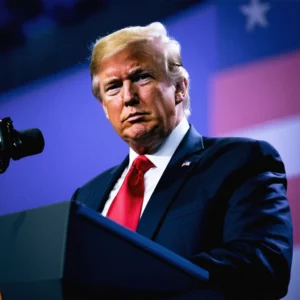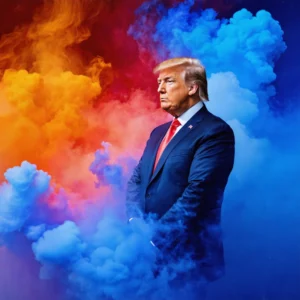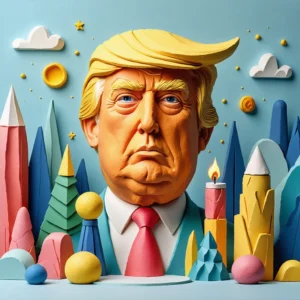
Introduction
The Democratic Party, long celebrated for its progressive ideals and broad coalition, is currently undergoing a significant transformation. In the wake of evolving political, economic, and social challenges, the party’s approach to government is more complex than ever. This article examines the ongoing evolution of Democrats, dissecting their methods, challenges, and the internal debates that shape their policies. Critics and observers alike argue that while the Democrats have traditionally championed comprehensive governance, an emerging narrative suggests that the party is still under construction, striving to reconcile its historical identity with modern demands.
The Evolution of Democratic Identity
Historically, the Democratic Party has been known for its commitment to social justice, economic equality, and inclusive governance. However, recent internal analyses indicate that the party is wrestling with contradictory ideals and competing priorities. Ezra Klein’s column and subsequent reader responses have shed light on the tension between established policies and the call for reform. This tension has contributed to a layered evolution where:
- Traditional progressive values are being reexamined.
- Economic policies are gradually shifting to embrace modern market dynamics.
- Social policies are being redefined in the context of emerging technology and global challenges.
Historical Perspective
The party’s evolution can be traced back to the post-war era, when Democrats began to incorporate broader political coalitions. During this period, the emphasis was on social welfare and government intervention in the economy to promote stability and progress. Contemporary critiques, however, suggest that the once-unified party is now addressing a splintered system of values that includes both old school pragmatism and radical reformism.
Modern Dynamics
Today, internal debates have ignited discussions on several fronts. Key themes include the intersection of partisanship with governance, the rise of populism, and the role of technology in shaping political policy. As the party grapples with these changes, it faces the burden of uniting disparate viewpoints under a common banner—a process that is as challenging as it is necessary.
Analyzing the Challenges Facing the Party
The challenges confronted by the Democrats are multifaceted, involving internal divisions as well as external pressures. One of the major points of contention is the handling of domestic opposition, often succinctly summarized by the term “domestic enemies.” This phrase encapsulates the perception that certain forces within the country are undermining the party’s vision for a progressive government.
Internal Divisions
Internal divisions have increasingly come to the forefront, with different factions advocating for varying levels of government intervention:
- Progressive Wing: Calls for expansive reform in areas such as healthcare, education, and labor rights.
- Centrist Elements: Focus on pragmatic governance and strategies that emphasize moderation while still moving the needle on policy changes.
- Moderate Reformers: Emphasis on incremental changes, particularly in response to technological advancements and economic pressures.
External Pressures and Domestic Opposition
Aside from internal fragmentation, the Democrats also face significant external challenges. The narrative of “domestic enemies” has been employed by critics who argue that the party’s policies sometimes inadvertently empower forces that work against national cohesion and progressive goals. These challenges are multifaceted:
- The rise of competing political movements that question established narratives.
- Pressure from conservative groups that emphasize a return to traditional values.
- Economic uncertainties that force the party to rethink its regulatory and fiscal policies.
The Domestic Opposition Narrative
The concept of domestic enemies has become a potent rhetorical tool in contemporary political discourse. Critics claim that the Democrats’ approach to governance inadvertently fuels dissent by allowing fringe elements to exploit their internal conflicts. This narrative is particularly evident in debates over:
- Immigration policy and national security.
- Economic restructuring affecting established industries.
- The balancing act between global engagement and domestic priorities.
Rhetoric vs. Reality
The portrayal of internal dissent as a form of domestic enemy has both symbolic and practical implications. Politically, it serves to rally the base around a perceived unified front, even while acknowledging underlying schisms. However, such rhetoric risks oversimplifying complex policy debates and masking the nuanced reality of democratic governance. Effective policy requires moving beyond labels to address substantive issues.
Impact on Governance
This dichotomy presents a real challenge: ensuring that internal debates lead to constructive policy rather than destructive polarization. The call for internal reform and departmental modernization, as expressed in recent column responses, emphasizes the need for clear and effective strategies in order to manage these domestic challenges without compromising the integrity of the party’s long-term vision.
Strategies for Future Success
In order to forge a path toward both internal unity and effective governance, the Democratic Party must embrace a multipronged strategy. Several key steps are proposed to address the challenges outlined above:
Reaffirming Core Values
One of the first steps involves a renewed commitment to the party’s foundational principles. Some suggested measures include:
- Emphasizing transparency and accountability in all governmental dealings.
- Strengthening alliances with communities historically impacted by policy shifts.
- Utilizing technological advancements to enhance civic engagement and participation.
Implementing Structural Reforms
Reforms aimed at consolidating internal structures and streamlining decision-making processes are crucial:
- Reorganization of Policy Committees: Creating specialized task forces that can address contemporary challenges with focused expertise.
- Enhanced Communication Channels: Utilizing both digital platforms and traditional media to facilitate better dialogue among party members.
- Strategic Policy Reviews: Regular audits of ongoing projects and policies to ensure they align with evolving democratic values.
Engaging with Domestic Opposition
Instead of viewing domestic critics merely as adversaries, the party should engage with diverse viewpoints to foster constructive dialogue. The following table outlines critical aspects of such engagement:
| Challenge | Current Approach | Emerging Strategy |
|---|---|---|
| Polarization | Segmented messaging and voter targeting | Inclusive policy debates and cross-faction consultations |
| Economic Inequity | Broad fiscal reform proposals | Targeted investments in underserved regions and sectors |
| Social Fragmentation | Rhetorical emphasis on shared values | Practical programs fostering community engagement and integration |
Conclusion
The evolution of the Democratic Party is a reflection of broader societal changes and the inherent complexities of modern governance. While the party continues to uphold its core commitments to progressivism and social justice, it is undeniably “still under construction”. Facing internal divisions, external pressures, and the contentious narrative of domestic opposition, Democrats are called upon to innovate and unify. As policy debates grow more intricate, the need for strategic clarity and internal cohesion becomes paramount.
Successful navigation of these challenges will require embracing reform, enhancing communication, and recalibrating internal systems. The future of the party depends on its ability to translate vigorous debates into substantive actions that resonate with a changing electorate. In this new era of American politics, unity, adaptability, and strategic foresight remain the guiding principles for transforming challenges into opportunities for progress.




